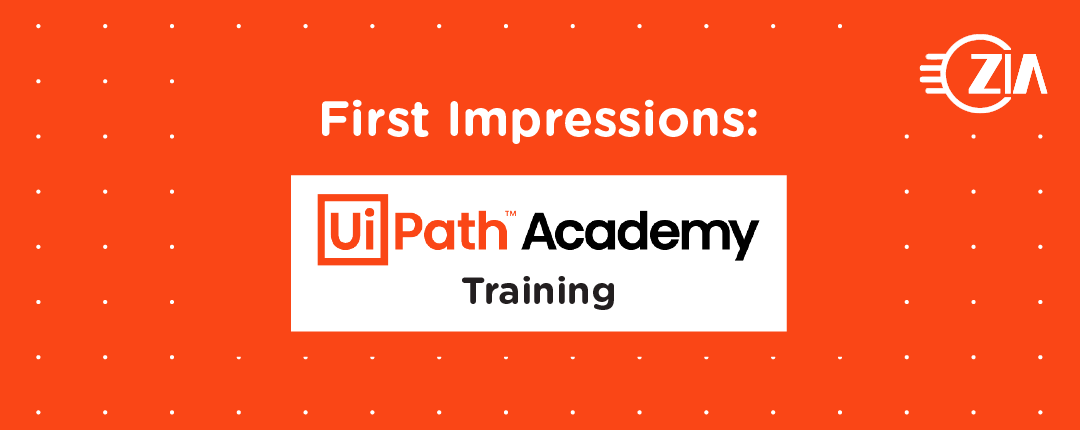Are you entering the world of RPA? Want to easily build workflows? UiPath Academy has two main spaces where you’ll find the trainings are the Courses and Learning Paths tabs. The Courses tab has almost 100 different training courses available ranging from beginner to advanced. I started with the RPA Starter course. It gives a broad overview of Robotic Process Automation and an introduction to the UiPath platform. It also includes a comprehensive walkthrough for installing UiPath Studio and building your first automation.
Easy to Follow, Easy to Use
UiPath Academy makes it easy to pick a course and learn at your own pace. You can search for any course from the Courses tab or you can follow a set of courses in the Learning Plans tab. The learning plans are bundles of courses aimed at specific roles such as RPA developer, solutions architect, and business analyst. Most courses only have a single module. Some of the advanced courses have multiple modules with content that they estimate will take 40+ hours to complete.
The training is a mix of visual, textual, and interactive learning elements. As a visual learner, I loved the video portions of the training. The videos are a great way of following along with the instructor. They explain and show how to use UiPath Studio. Not a visual learner? Below each video is an expandable section containing the video’s transcript. UiPath allows you to jump around from training to training and skip any section. Some sections require you to complete a quiz.
Ensuring Understanding
UiPath Academy utilizes quizzes and practice problems to cement the training material. The practice problems require you to build a workflow to meet a set of conditions.
The first few practice problems from the RPA Developer Foundation learning path are simple tasks. They show you how to use UiPath’s activities in the same way you would code. This includes how to find minimum and maximum values in an array, using switch statements, using loops, and simple data manipulation. These practice problems are an introduction to the basics of programming in UiPath. The advanced practice problems teach you how to read Excel files, manipulate data tables, interact with user interfaces, and screen scraping. Every practice problem comes with a step-by-step solution. They also come with a zip file that contains a working solution of the problem. The highlight of the practice problems was building a state machine workflow that functioned like a vending machine by prompting the user for selections and giving change at the end.
Ten-question quizzes follow the practice problems to reinforce key points from the course. The quizzes are a combination of true or false, matching, and multiple choice questions. You need a score of 80% or better to pass the quiz and the course will not be marked as finished until you pass the quiz.
Constantly Improving
UiPath is constantly updating their training to improve the quality. Each course has a feedback module that must be completed in order to receive full credit for finishing the course. Each feedback module asks if the information from the training was sufficient enough, with a space to add a response if you have any additional questions after taking the training. I found that some of the trainings were outdated and had to resort to Google to find a solution. I explained the problem and solution in the feedback so that the training can be updated. UiPath has been rapidly pushing out new features and functions, and I can imagine it is difficult to update the training at the same pace.
Final Thoughts
In closing, through this comprehensive training, I built my own workflows with ease. I recommend UiPath Academy training for those who plan to enter the world of RPA development.

